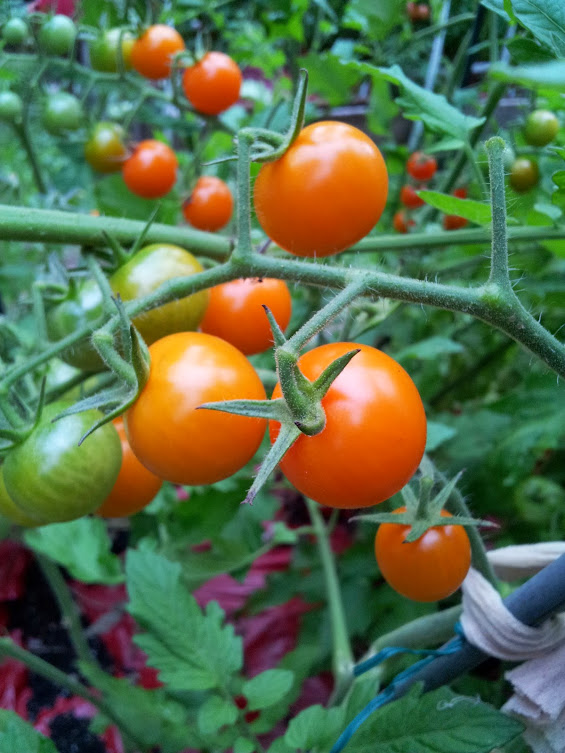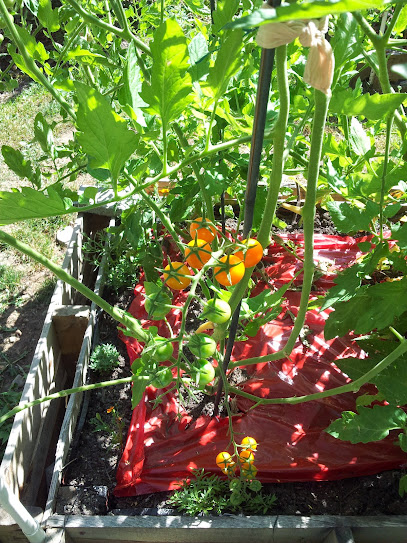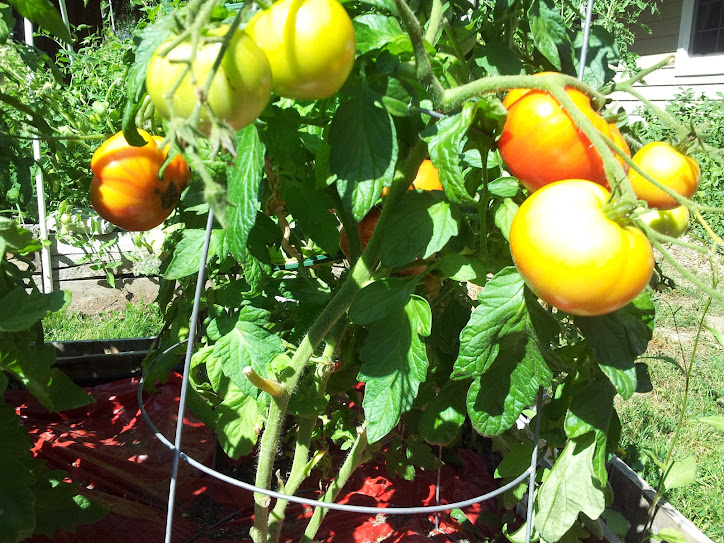The Oregon Spring tomatoes produced NINE pints this week! I also got nearly a pound of Sun Golds, a type of salad tomato. My neighbors are about to benefit from those salad tomatoes :)
To recap, I have 2 Sungolds, 4 Oregon Springs, and 4 Grandma Mary's Paste tomato plants growing in my garden this year. I pruned 1 Sungold, 1 Oregon Spring, and 1 Grandma Mary and let the rest go wild. I'm also growing Legends and Green Zebras, but I left them out of the experiment this time around.
The Grandma Mary's are still doing nothing. I have high hopes that they're waiting to wow me.
The Sungolds have to be harvested twice a week at this rate! Sorry the pictures are split up, but that was the only way to keep ahead of the game.
Pruned Sungolds:
Un-Pruned Sungolds:
Pruned Oregon Spring:
The pruned Oregon Spring tomato has finally started producing tomatoes. It's first week produced 15 ounces more tomatoes than its three other brothers their first week combined. Better late than never :)
As you can see, I was too excited to take a picture before I started harvesting!
Un-Pruned Oregon Springs:
Total harvest from Unpruned Sungold: 11.4 ounces
Total harvest from Pruned Oregon Spring: 47.30 ounces
Total harvest from Unpruned Oregon Spring: 163.05 ounces (32.61 ounces per plant)
Total harvest from Pruned Grandma Mary's Paste Tomatoes: 0 ounces
Total harvest from Unpruned Grandma Mary's Paste Tomatoes: 0 ounces
What to do with all of these tomatoes? Well, make Frankie's famous marinara sauce, of course!
Keep watching the blog, I'll continue to post the harvest tallies each week.





















.jpg)


























